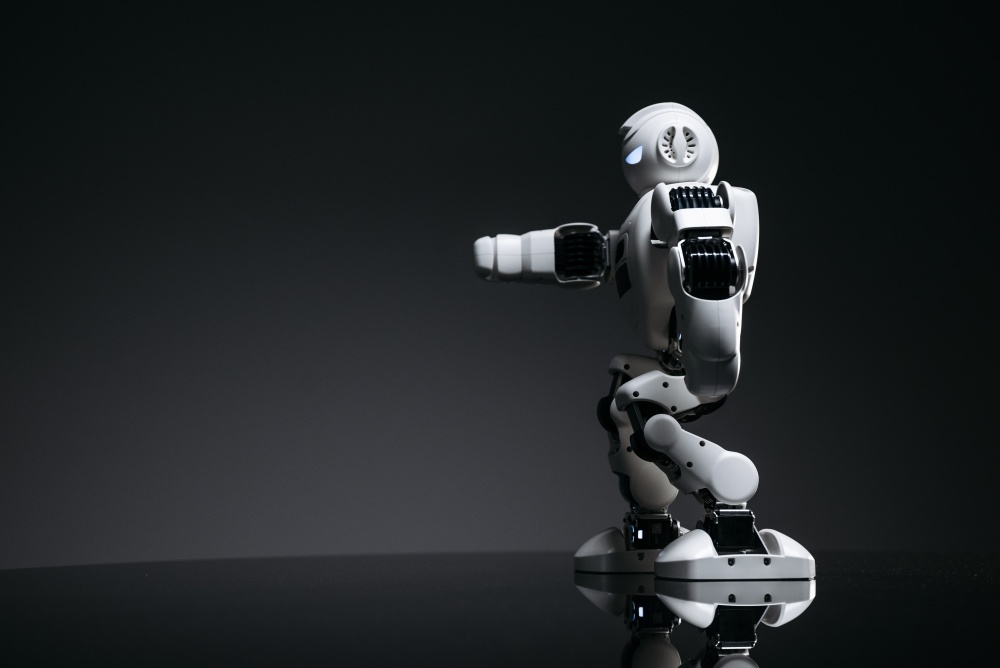Updated August 26, 2024
Japanese Technology: How it shaped the world
Japan is a country that’s historically been closely identified with technology.
Try to think of a kitchen appliance brand, a video game console, or any consumer electronics goods in general that you may have at home. Chances are, it’s a Japanese brand.
It’s no secret. We are so accustomed to using Japanese-made technology for so long that we don’t even realize how much we’ve incorporated Japanese brands into our lives anymore.
Perhaps, because of this, the idea that Japan is this incomparable tech giant has been collectively imprinted in all of our minds without even noticing. In fact, it’s common for most people who have never been to Japan to imagine the country as a place of futuristic wonders with cutting-edge technology holding people by the hand every step of the way in daily life.
Especially if you’re into electronic gadgets like me, you’ll see TikTok videos showing how progressive the country is with its technology at every few scrolls. You see vending machines for cakes, robot cooks that prepare street food, or home appliances that you don’t know what they’re for but look like they’re straight out of a sci-fi movie.
However, while Japan did historically rule the world of technology for quite a long time, the country’s once full innovation tank now seems to have been depleted for a while as we move further into a new era.
So, what happened to Japan’s leading technology? Is there a glimmer of hope in the country’s future of innovation? These are some of the many questions I’ll answer in this post.
But first, buckle up because we’re taking a journey back in time to the glory days of Japanese technology.
Japan’s History of Technological Innovation
For most people who are in their adult stages of life, Japanese technology is almost synonymous with the consumer electronics craze that began in the late 60s and 70s and spread like wildfire but began to dwindle as we moved further into the new millennium.
In fact, most people will remember the Walkman era fondly, and those who are into gaming will cherish those early Saturday mornings spent challenging themselves on the latest Nintendo system.
However, Japan’s history of technological innovation actually predates this tech upheaval, as the country’s technological affinity began all the way back in 1868, at the beginning of its industrialization after the event known as the Meiji Restoration.
Technological Advancements in The Empire of Japan
I covered the Meiji Restoration extensively in my post about kimonos and other Japanese clothing, but essentially, the Meiji Restoration marks the end of the military control in Japan as the imperial forces came into reign. Thus, the era between the years 1868 and 1912 came to be known simply as the Meiji Era.
During this period and in the following years, up until the postwar period, Japan had quite the advancements in technology, especially in fields related to manufacturing and processing textile.
What’s more, it was also in this period when dry-cell batteries were invented in Japan, which didn’t take long to take off, as the groundbreaking invention quickly started to be exported to other countries.
Another groundbreaking invention at the time, the world’s first wireless telephone, was also invented in Japan during this era.
This wasn’t a coincidence, as advancements in telecommunication were quite the thing in Japan at the time, with new types of antennas, cables, and tubes for TV production also being invented by Japanese inventors a couple of decades later.
While these are some of the most notable, other advancements made in this period also include the invention of switching circuits, which revolutionized the digital circuits used in electronics today. Then, there was the invention of magnetic resistance steel, which opened up new possibilities in manufacturing.
In the same vein, Japan also took some big steps in military technology by developing the first purpose-built aircraft carrier, as well as landing ships and diesel-powered tanks, which were notable accomplishments that went straight into history books.
Technological Advancements in Postwar Japan
In its postwar period, Japan’s advancements in technology continued to evolve. Especially with the help of innovative military technologies the country had developed prior, Japan was riding the wave of innovation to its full extent, slowly entering a “golden age” after the 60s.
In this period — up until today — Japan has been a home for some of the best inventions of the last century, along with technologies that were the building blocks of today’s digital world, thus managing to carry over to the present day.
Perhaps some of the most notable of these advancements were made in the form of batteries and transistors. Even though Japanese scientists have also attempted to make advancements in digital circuitry, the country had its big-time success working on transistors, as they invented efficient ways to process and manufacture them.
What’s more, lithium-ion batteries, also known as li-on batteries that are still in use today, were also invented in Japan.
Of course, the substantial nature of these inventions led to the development of a wide variety of electronic devices, especially in the field of audio. You might think of the Walkman at first, but Japan has also created some of the most worldwide renowned audio/music production equipment and instruments that are still highly sought-after even today.
In as early as the ‘80s, Japanese technology even allowed for the production of the first analog-style HD televisions, which — despite being replaced by digital HD TV technology later — was a groundbreaking development at the time.
Of course, consumer electronics wasn’t the only field Japan excelled at. There were also huge advancements in computing and transportation. For instance, the high-speed technology known as bullet trains were the world’s first high-volume capable high-speed trains.
In addition, the country also prioritized the development of semiconductors way ahead of its time and took important steps in the production of modern computer chips. As a result, the development of computer-generated graphics and video games was also an important development in the country’s history.
Japanese Technology Today: An Overview

As you can see, Japan has had a huge impact on the development of many technologies we know today.
Not only did the country spearhead the emergence of various gadgets and technologies that didn’t exist and are now crucial parts of our lives, but they also have proven to the world that Japanese technology is something to look out for.
For a long time, especially after the late ‘70s, when Japan’s miracle growth started to take effect on an international scale, it seemed like any new flashy tech that was developed in Japan would eventually make its way into the United States and the rest of the world. However, nowadays, we see that this is hardly the case anymore.
Of course, when you look at a “day in the life” type vlog of a Japanese person, or better yet, of a foreigner who’s living abroad in Japan, we still see various technologies that seem to make life easier or more convenient but are nowhere to be found in the rest of the world.
So, what changed?
Ranks Don’t Lie: Innovation Is Key
The key word that should help us answer this question is innovation. If we look at some of the most respectable organizations’ studies on global innovation, such as the one from the World Economic Forum, for instance, we see that Japan is nowhere to be found in the list of top 12 innovative countries in the world.
This has been the case for the duration of the past decade, too. In a similar fashion, if we look at the latest Global Innovation Index report from 2022, we see Japan all the way down in the 13th spot, among the 132 economies that are ranked.
Sure, it’s not terrible. Getting the 13th spot out of 132 can even be considered somewhat of a success.
However, considering the fact that Japan once single-handedly ruled the world of technology by a large margin and was synonymous with innovation, it surely is a step down.
For some perspective, the country ranked fourth in the first report of the Global Innovation Index, which was in 2007, so things seem to have gradually slowed down since Japan’s glory days.
Utilizing “Borrowed” Technology
Don’t get it wrong, though. Japan is still pretty good at applying and utilizing technology in daily life. There are so many gadgets and appliances, as well as technological infrastructure, that do make life easier in Japan.
However, the country has been struggling with coming up with new technologies from scratch or finding new or more efficient applications for technologies that already exist, which is what innovation is all about.
For instance, while Japan didn’t invent transistors, which are a common component used in the circuitry of all electrical devices we use today, they were arguably the first to capitalize on this technology by figuring out efficient and reliable methods to produce stable transistors, like the transistor radios manufactured by Sony.
So, considering the incorporation of technology in everyday life, you may still think that Japan is miles ahead in technology compared to the rest of the world. However, this sentiment becomes much less convincing when the cutting-edge chips that are used in the technological devices that are popular in Japan today are mostly using tech originally developed in the US and elsewhere.
A Robust Infrastructure
While everything I mentioned so far in terms of innovation seems to be against Japan’s case, all of this isn’t to say that things are by no means bad, of course.
Yes, the country is not quite what it was when it had the second-highest GDP in the world, but compared to many countries, Japan is still in a pretty good position.
So, to mention some of the good that’s still intact in Japan, all in all, Japan still has a stellar infrastructure thanks to the country’s history of innovation.
For instance, one of the most well-known facts among travelers is that Japan has an incredible railroad system. The ultra-fast bullet trains make it incredibly easy to get anywhere quickly and efficiently.
What’s more, the conveniently placed stops and the well-thought-out system allow for commuting from distant locations a breeze. This, in particular, has an immense effect on the country’s overall productivity, as it provides people with more options for work, with distances not being as much of a hassle anymore.
The same sentiment goes for infrastructure related to the Internet and communication in a broader sense as well.
The long-term strategies adopted by the Japanese government early on in the development of the Internet as we know it today have paved the way for an admirable Internet infrastructure, which is often praised internationally for allowing easily affordable and accessible Internet connection today.
That being said, perhaps some of the most notable advancements Japan is making today are, without a doubt, in the field of robotics, which deserves a section of its own.
Unleashing the Future: Japanese Robotics

While many countries were in a race of innovation to gain a competitive edge over one another, as you can tell by now, Japan’s technological advancements largely came out of mere necessity as a way to solve particular problems within society as a whole.
So, the advancements made in the field of robotics were no exception.
While the ‘60s saw the beginning of Japan’s high economic growth, as the country made huge leaps in technology and innovation, for those who are in the know, a true revolution in the country’s technological advancements actually began in the early ‘80s with the rise of robotics.
In the beginning, Japan’s first industrial robots were developed using research and development that was conducted in the United States. This came as a result of a collaboration between Japan’s Kawasaki and the US-based Unimation, the world’s first robotics company.
What’s more, while the general public in the U.S. and Europe were scared about automation replacing human labor and therefore making many jobs obsolete, Japan’s lifetime employment culture (see my post on the Japanese salarymen) and the fact that nobody wanted to do the so-called “dirty work” — factory labor — made the acceptance of automation a breeze.
Thus, Japan started to prioritize automation in manufacturing as a strategy. As research and development conducted by Japanese universities went on from the ‘60s all the way to the ‘70s, the first full-body humanoid robot was invented by Waseda University researchers by 1972.
The Brilliant Age of Robotics in Japan
The first humanoid robot attempt made by Waseda University, which was titled Wabot-1, was a great proof of concept that showed promise for the future. All of this led to 1980 being called the first year of robotics, as robots started to replace many steps in production and manufacturing, and the age of robotics in Japan officially began.
In fact, incredible advancements were made in the ‘80s in Japan in no time, as the selective compliance articulated robot arms were invented around this time as well, which not only sped up the production process but also allowed for a level of precision that wasn’t possible before.
Japan’s boom in robotics was so prominent in the ‘80s that many companies in the country followed suit and began working on robotics as well. In no time, the country had more robotics companies than they would need, but that, luckily, wasn’t going to be a problem.
The Resilience of Robotics in Japan
While the robotics boom that took off in the ‘80s made quite an impact and the undergoing growth continued for a while, the turn of the decade famously saw a decline in not just Japan’s but also the world’s economy.
Due to the burst of the housing bubble and the stock market crashing in 1992, Japan, like many other countries at the time, entered into an era of a financial crisis that would later be called the Lost 20 Years.
However, the crisis that was happening at the time didn’t really affect the robotics industry. While personal computers and personal gaming consoles, aptly titled “family computers” at the time, started to become a thing in the ‘80s, the ‘90s saw the popularization of this trend, as personal computers became mainstream.
What’s more, as programmable chips were all the rage, more and more devices began using computer chips in their devices which allowed for more functionalities than were possible before.
So, with this need for computer chips quickly rising, as Japan was the world’s leading manufacturer at the time, the robotics industry in Japan not only survived but quite literally thrived during this era of recession. In fact, robotics might have even helped the country stay afloat during the so-called “lost 20 years.”
While the beginning of the 2000s saw China’s economy rising, as they followed suit with the robotics trend and even took over a large portion of the global need for industrial robotics manufacturing, Japan is still one of the most prominent robot manufacturers in the world.
Many people still associate robots with Japan today, which isn’t a surprise, considering perhaps the world’s first non-human global celebrity, ASIMO, was manufactured as a result of Honda’s experimentation, a Japanese company.
Today, despite the ever-growing competition, Japan is still responsible for around half of the world’s robot manufacturing, which is a true testament to the resilience of robotics, as well as the country’s visionary mindset.
Robotics in Japan Today: Cutting-Edge Examples
As I said, Japan is still among the top robotics manufacturers in the world today. So, let’s talk about a couple of cutting-edge examples from the country’s robotics industry.
The companies I’ll introduce below are special because their focus is on innovating new solutions through the power of robotics.
With that in mind, our first company under the spotlight is Mujin.
Mujin envisions a future where all robots can be controlled through a common platform. Essentially, Mujin builds “intelligent robot controllers” that can run on a universal platform and are easy to install in various environments to minimize the complexity of setting up robotics systems.
Since its founding in 2011, the company has been utilizing its motion planning technology to provide solutions in manufacturing and logistics.
Mujin has been expanding globally, reaching Europe, the US, and China, and is sure to continue making waves in Japan and beyond.
Another pioneering company in Japan’s robotics industry is Raptuya Robotics.
Raptuya Robotics is a Tokyo-based startup founded in 2014 that focuses on cloud-based robotics solutions. They are working on building a platform that integrates the hardware, software, sensor data, and applications in the cloud, so that our future with robots can become more easy, seamless and attainable for the average person.
The company has grown quite a bit since its conception, employing over 110 people today. In addition to Japan, the company also operates in India.
The Road Ahead: Japan’s Technological Future

While Japan might not be what it once was, it’s safe to say that things are looking up, and the future of Japanese technology seems brighter than ever.
It may feel inappropriate to put it this way, but just as the recession back in the ‘90s affected the robotics and semiconductor industries in Japan, the recent Coronavirus pandemic has also affected not just Japan but the global IT industry in general quite positively.
Traditional industries that were still in the earlier stages of digitalization may have suffered greatly at the height of the pandemic, but all businesses, including the ones that operate in the IT sector, came to a screeching halt for a while.
No matter the type of business being conducted, all businesses quickly had to adapt to remote work practices, which wouldn’t be possible without a proper IT infrastructure and competent technology.
So, as a result of this worldwide crisis, the process of digitalization in business took off. What’s more, if companies wanted to keep selling items that customers would rather try and see in stores, they had to quickly come up with new ways that allowed consumers to make a purchase from home, as well as peruse products in the same manner.
Also, I told you about this in my post on surviving the Japanese work culture, but other than the IT industry, which had a more modern and “Westernized” structure, Japan’s work culture wasn’t the easiest to adapt to working remotely.
So, while the pandemic quite literally hit the reset button on some of the ongoing trends and brought upon new ones that arose out of necessity, some trends ended up gaining importance as they needed to be prioritized.
So finally, let’s take a look at some of the future trends in Japanese tech in the wake of these recent developments as I conclude today’s post.
DX, AI, and IoT: A Future Ruled by Acronyms
Perhaps the most important trend in tech happening not just in Japan but in the world is digital transformation, which is also known as “DX” nowadays.
What DX means for consumers is to involve technology to make certain aspects of life better. This usually translates into the tech world as transforming existing business models to ones that are more efficient and tech-oriented.
For instance, ride-sharing apps have more or less replaced taxi cabs, and e-commerce websites have transformed the physical shopping experience into an online one, streamlining every step of the process effectively.
However, DX also involves transforming how businesses themselves operate. So, as a result of the wake-up call that was the pandemic, DX seems to continue to be at the forefront of Japan's future technological advancements.
While DX is a more general field, more specific technologies, namely AI and IoT (Internet of Things), are also gaining traction.
AI needs no explanation, as it’s taking the world by storm, but AI chatbots are already in use for many businesses, and they’re expected to become even more helpful for initial diagnostics in med-tech or personal shopping experiences in e-commerce in the future.
Similarly, the Internet of Things is another field that shows great promise in Japan’s future. As every electronic device can simply be improved by being connected to the Internet, Japan is especially prioritizing research and development regarding IoT.
While IoT is already prominent in the field of consumer electronics, Japan is focused on utilizing IoT in other fields, such as the transportation and medical technology industries. With this trend, Japan’s need for engineers, especially in the field of IoT, is expected to grow in the future.
While these are the most promising fields in Japanese technology, other trends that are ongoing or show promise for the future include 5G, cloud services, blockchain, and quantum computing technologies.
Of course, these are predictions based on the information we have now, but new, unexpected trends can always arise, as we never know what global crisis or new groundbreaking technological advancement is around the corner.
Pioneers of AI and IoT in Japan
While this is it for the state of Japanese technology, before we conclude, I’d like to solidify my findings on Japan’s AI and Internet of Things scene with some great examples.
AI Companies in Japan to Look Out For
As I said, the AI craze is also taking up Japan by storm.
For instance, Pleap, a startup that works on AI and medicine, makes it possible for doctors to utilize AI when examining patients.
Pleap’s software platform “Medimo” allows medical professionals to record the examination findings efficiently, and get quick summaries for a faster diagnosis. The company’s product has created over 50,000 medical examinations utilizing the power of AI despite only being founded in 2022.
Like Pleap, another med-tech company using AI is SyntheticGestalt. This life sciences-focused startup uses AI to discover and analyze drugs and enzymes. The company’s work is backed by prestigious universities in the UK and Japan and operates across both countries.
Givery is another great example of an AI-focused company in Japan. Givery has been funding AI-powered startups since 2009 and has made a name for itself in IT ventures in Japan. They’ve also developed AI tools for marketing and business development support.
The use of AI extends to the world of architecture as well. For example, Tektome, an architecture, engineering, and construction-focused company, builds AI-powered platforms to help companies operating in these fields collect and analyze data better, as well as manage plans and projects more efficiently.
AI in Japan isn’t just utilized to create tangible products, and companies like ExaWizards are great examples of this. ExaWizards focuses on personalized business solutions in all industries, creating tailor-made products and projects that resolve specific issues using Artificial Intelligence.
Sagri, on the other hand, is a social-impact-focused startup that utilizes satellite data and AI technology to develop solutions for global social issues such as climate change agriculture, and food security. Since its inception in 2018, the company has already developed multiple services for green agriculture, farming operations, and crop planting.
Last but not least, some companies are even working on measures to make sure AI can be trusted and is secure to integrate into all aspects of our lives. For instance, Citadel AI works on this particular topic. They test and monitor high-risk AI systems, and they’re hiring AI engineers to make the global future of AI safer and more reliable.
The Most Notable IoT Companies in Japan Today
Japan’s tech scene today is flourishing with the help of Internet of Things, and quite a number of notable companies are working hard to make living cities and smart homes a staple of our lives.
A great example of this is MODE, a company that brings both AI and IoT together. MODE is an all-things-IoT company, as the founders themselves admit to their fascination with “connecting things” with the help of the internet. The international operation spread across Tokyo and San Fransisco is a pioneer of IoT in Japan.
In a more specialized industry, Drivemode also deals with the Internet of Things, or vehicles, to be more specific. The company was founded in 2014 and is backed by Tesla Motors entrepreneurs. The company also closely works with Honda Motors to expand the interconnectivity of the company’s vehicles and smart devices.
Another company that emphasizes interconnectivity and interoperability, Datachain also focuses on the Internet of Things but from a fintech perspective. More specifically, the company focuses on connecting different blockchains, allowing users to manage their finances across multiple cryptocurrency wallets.
Lastly, NABLA Mobility is another brilliant startup operating in the world of the Internet of Things. The company works specifically in the aviation industry, creating solutions utilizing IoT data as well as artificial intelligence.
NABLA Mobility’s main products focus on providing situational awareness data such as turbulence, altitude, and weather data for airplane pilots, dispatchers, and operators. They also have a product that analyzes and creates customized flight plans based on those turbulence predictions, allowing for consistently safer and more efficient flights. Founded only in 2021, the company is backed by one of the biggest players in the aviation industry, Boeing.
To sum things up, the future of Japanese tech looks brighter than ever, thanks to the companies I mentioned above.
However, while these are the most notable ones, they are only a few examples from Japan’s lively tech scene.
If you want to find even more cutting-edge companies in Japan, you can head on over to our Japan Dev company list right after this. We vet all the companies we feature, making sure that they are the most modern environments with the best employment practices.
Get Job Alerts
Sign up for our newsletter to get hand-picked tech jobs in Japan – straight to your inbox.








